The Seagate FireCuda 520N is an M.2 SSD, aimed at enhancing the storage capabilities of portable devices where space is limited due to the 2230 SSD form factor. As such, it will likely find itself in handheld gaming devices like the Valve Steam Deck or ASUS ROG Ally as well as performance-driven, ultra-thin tablets like the Microsoft Surface. Available in both 1TB and 2TB capacities, the FireCuda 520N gives users adequate storage for a range of applications and games.
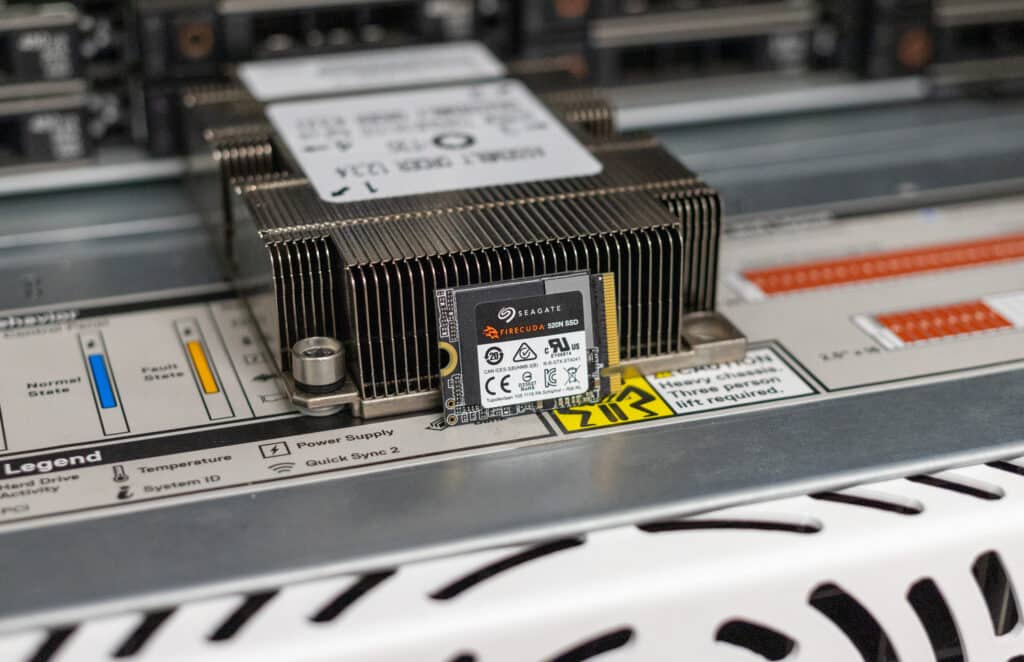
Seagate FireCuda 520N Use Cases
The M.2 2230 form factor for SSDs, such as the FireCuda 520N, is gaining significant importance in the realm of handheld PC gaming devices. The rising popularity of high-performance, portable gaming consoles has taken off since the release of the Valve Steam Deck with more such devices anticipated in the near future. As a result, the demand for compact, high-speed storage solutions is pretty high at the moment.
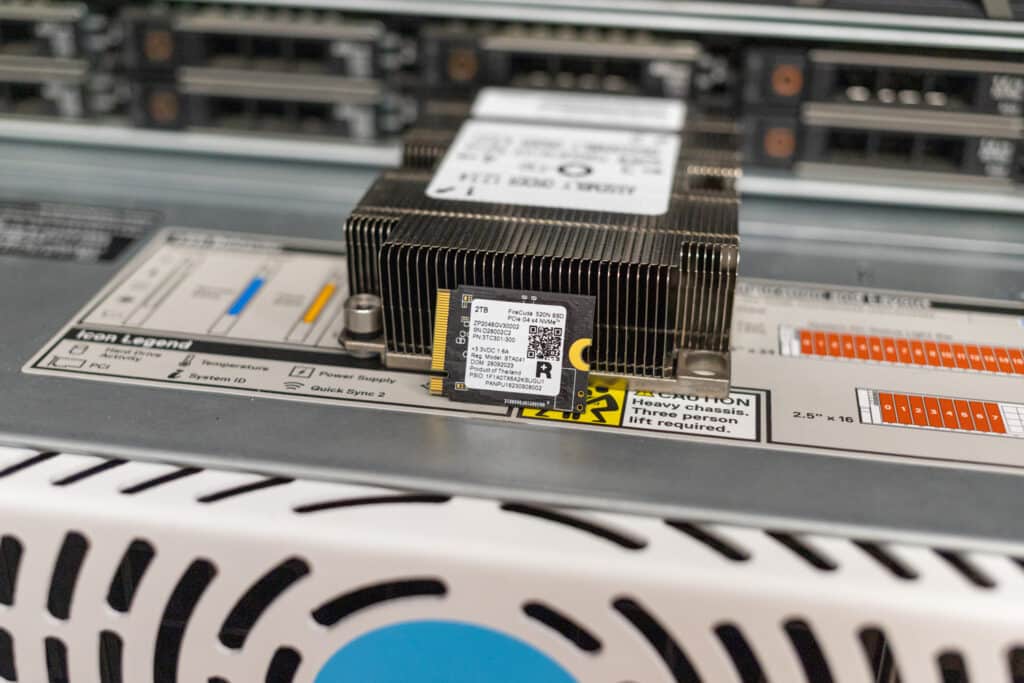
Moreover, opting for an M.2 SSD upgrade offers a cost-effective alternative to purchasing higher-capacity models of these gaming devices. This approach not only increases storage capacity but also potentially improves the overall performance of the device (rather than using SD cards via the built-in slots), making it an appealing option for gamers looking to maximize their handheld gaming experience without the need for a hefty investment.
Seagate FireCuda 520N Components, Features and Potential Performance
The Seagate SSD leverages the PCIe Gen4 NVMe 1.4 interface and also offers backward compatibility with Gen3 and Gen2 PCIe slots, enhancing its flexibility across different device generations. The Steam Deck for instance uses a Gen3 slot. The drive’s physical dimensions are 30.15mm in length, 22.15mm in width, and 2.23mm in height, weighing approximately 3 grams.
The FireCuda 520N is powered by Phison’s PS5021-E21T controller. Released last year, this is the company’s high-performance PCIe Gen4 DRAM-less solution, an ideal low-power solution for M.2 form factors. It’s designed for all-day computing in mobile environments as well as gaming, office, and business traveler use cases.
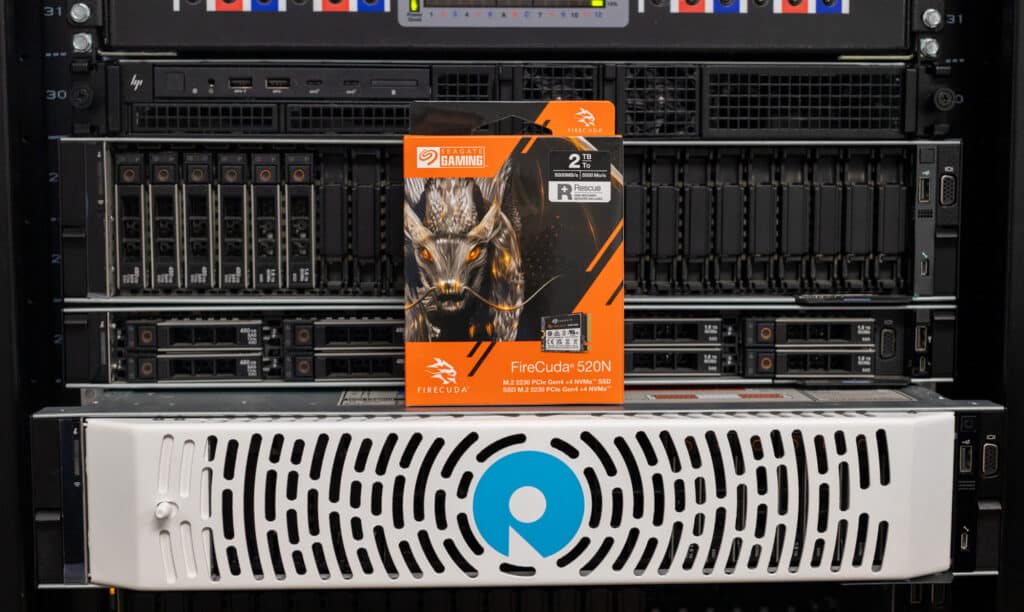
Performance between the two capacities is FireCuda 520N noticeably different. For example, the 2TB model is quoted to deliver moderate sequential read speeds of up to 5,000MB/s and sequential write speeds of up to 3,200MB/s. The 1TB iteration, on the other hand, offers sequential read and write speeds of up to 4,800MB/s and 4,700MB/s, respectively.
Moreover, with the 2TB model, Seagate claims 480,000/750,000 IOPS, while the 1TB model is expected to hit upwards of 800,000/900,000 IOPS for random reads/writes, respectively. Nonetheless, such potential performance metrics make the SSD effective for high-demand applications like gaming.
The FireCuda 520N SSD has a Mean Time Between Failures (MTBF) of 1.8 million hours, indicating a decent level of reliability over an extended period. The Total Bytes Written (TBW) for the 2TB model is 450TB, and for the 1TB model, it is 600TB. Additionally, Seagate includes a three-year Rescue Data Recovery Services plan and a five-year limited warranty, providing further assurance of the drive’s reliability and support in case of unforeseen data loss.
The FireCude 520N is available for $109.99 for the 1TB (affiliate link) and $189.99 (affiliate link) for the 2TB. We will be looking at the 2TB capacity for this review.
Seagate FireCuda 520N Specifications
| Feature | Description |
| Form Factor | M.2 2230-S2 |
| Interface | PCIe Gen4 ×4 NVMe 1.4 |
| Capacities | 1TB, 2TB |
| Sequential Read (Max, MB/s) | 5000 for 2TB, 4800 for 1TB |
| Sequential Write (Max, MB/s) | 3200 for 2TB, 4700 for 1TB |
| Random Read (Max IOPS) | 480,000 for 2TB, 800,000 for 1TB |
| Random Write (Max IOPS) | 750,000 for 2TB, 900,000 for 1TB |
| Rescue Data Recovery Services | 3 years |
| Warranty | 5 years |
| Mean Time Between Failures (MTBF, hours) | 1.8M |
| Total Bytes Written (TB) | 450 for 2TB, 600 for 1TB |
| Operating Temperature (°C) | 0 to 70 |
| Nonoperating Temperature (°C) | -40 to 85 |
| Shock Nonoperating: 0.5ms (Gs) | 1500 |
FireCuda 520N Performance
For database and synthetic testing, we leverage the Lenovo ThinkSystem SR635 server, equipped with an AMD 7742 CPU and 512GB of 3200Mhz DDR4 memory. NVMe is tested natively through an edge-card slot with an M.2 to PCIe adapter card. A significant focus is put on drive latency across the entire load range of the drive, not just at the smallest QD1 (Queue-Depth 1) levels. We do this because many common consumer benchmarks don’t adequately capture end-user workload profiles. For our added BlackMagic Disk Speed Test performed in Windows, we use our self-built StorageReview desktop.
We are reviewing the 2TB version of the FireCuda 520N and will be comparing it to the following other M.2 2230 SSDs:
- Corsair MP600 Core Mini (2TB)
- Sabrent 2230 Rocket (1TB)
- WD Black 770M (2TB)
VDBench Workload Analysis
When benchmarking storage devices, application testing is best, and synthetic testing is second. While not a perfect representation of actual workloads, synthetic tests help baseline storage devices with a repeatability factor that makes it easy to compare competing solutions. These workloads offer a range of different testing profiles ranging from “four corners” tests and common database transfer size tests to trace captures from different VDI environments.
These tests leverage the common vdBench workload generator, with a scripting engine to automate and capture results over a large compute testing cluster. This allows us to repeat the same workloads across a wide range of storage devices, including flash arrays and individual storage devices. Our testing process for these benchmarks fills the entire drive surface with data, then partitions a drive section equal to 1% of the drive capacity to simulate how the drive might respond to application workloads. This differs from full entropy tests that use 100 percent of the drive and take them into a steady state. As a result, these figures will reflect higher-sustained write speeds.
Profiles:
- 4K Random Read: 100% Read, 128 threads, 0-120% iorate
- 4K Random Write: 100% Write, 64 threads, 0-120% iorate
- 64K Sequential Read: 100% Read, 16 threads, 0-120% iorate
- 64K Sequential Write: 100% Write, 8 threads, 0-120% iorate
Starting with 4k random read, the FireCuda 520N had poor performance out of the gate with several major spikes, with a peak of just 29K IOPS at a latency of 4,444µs.
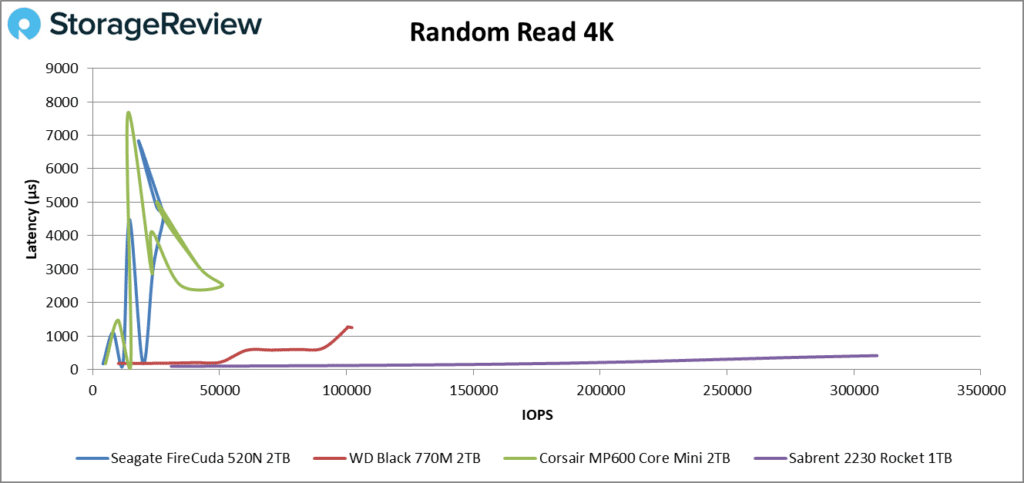
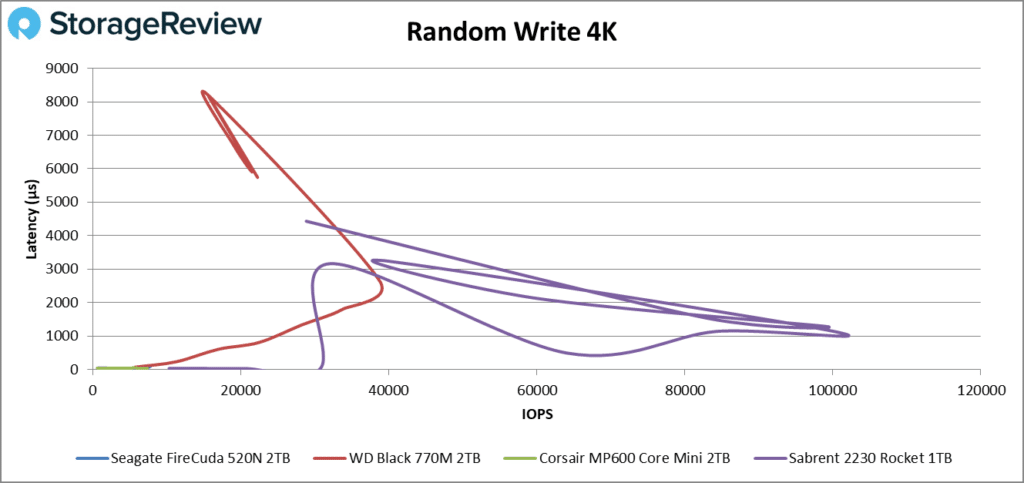
When looking at sequential reads, the drive doesn’t even look like it’s part of the performance chart. This is because it ended the test at just 979MB/s read with a latency of 2,130µs significantly behind the WD and Sabrent drives.
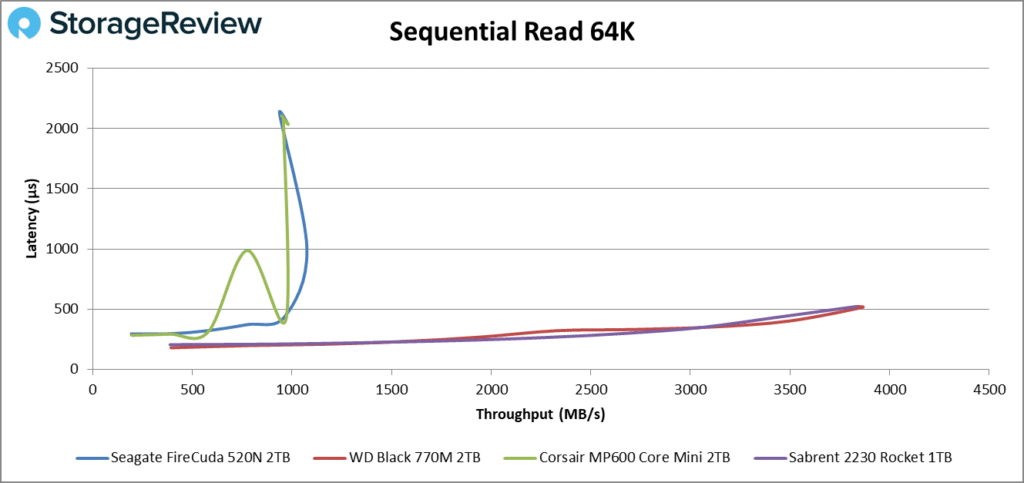
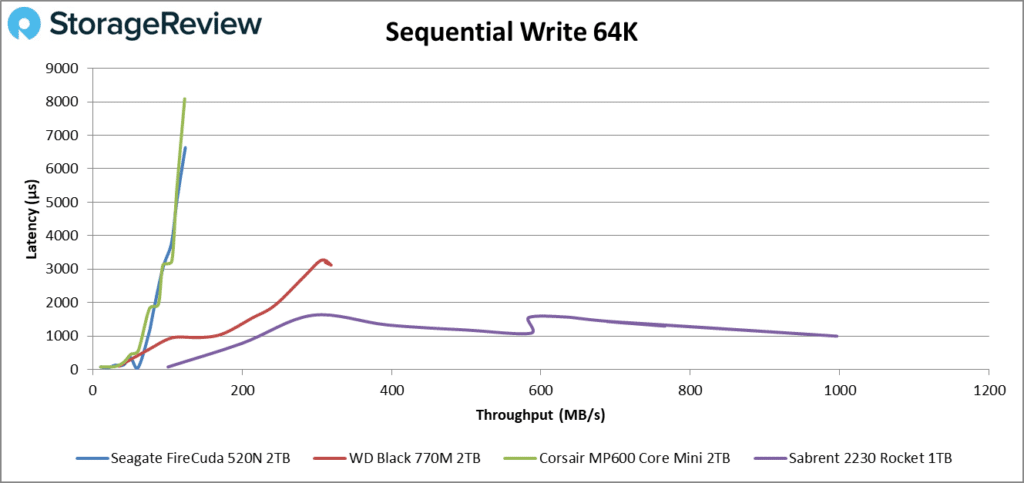
Next, we looked at our VDI benchmarks, designed to tax the drives further. These tests include Boot, Initial Login, and Monday Login. The 520N expectedly had very uneven results with these workloads. Starting with our boot test, the FireCuda drive demonstrated huge performance spikes from the get-go (like the Corsair drive), ending the test at just 15K IOPS.
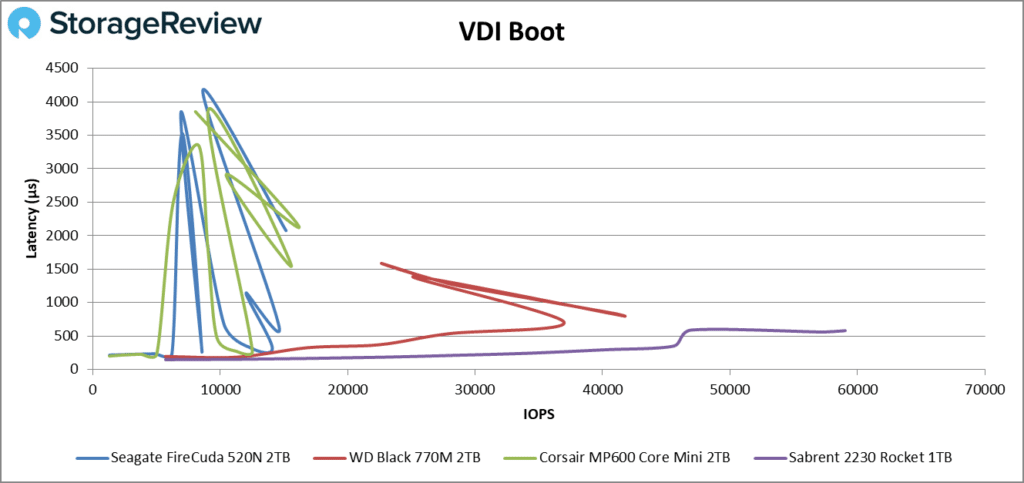
For VDI Initial Login, the 520N had a peak of just over 14K IOPS (at 1,320.7µs) before taking a significant spike and ending the test at just under 10K IOPS.
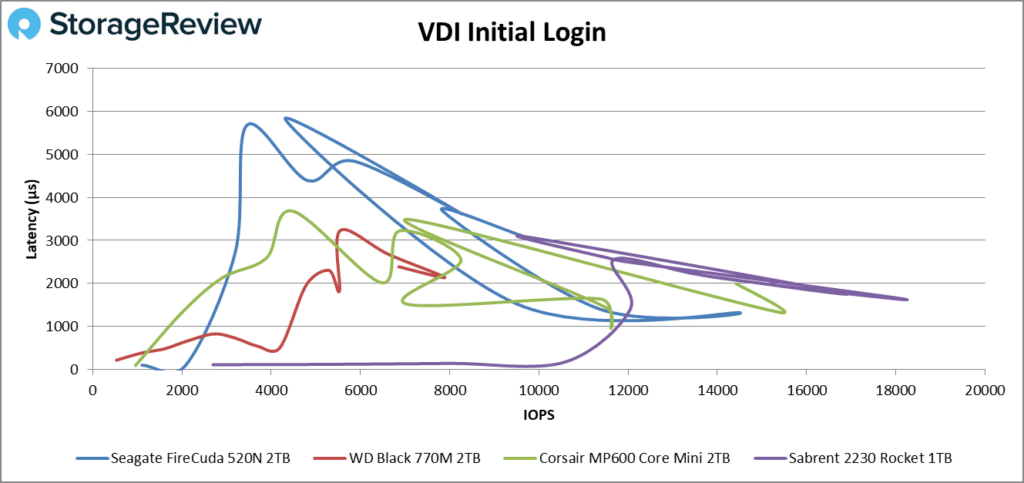
Finally, the VDI Monday Login benchmark, the 520N was actually placed second peak performance of 12.4K IOPS (1,287ms) before taking serious spikes and ending the test around 10K IOPS.
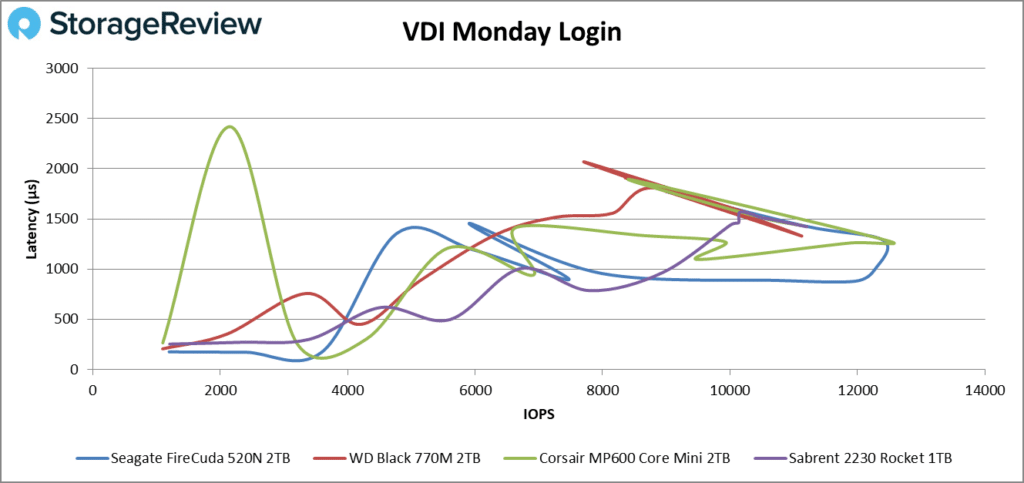
Conclusion
The Seagate FireCuda 520N SSD stands out for its compact design meant for portable storage solutions, especially in the context of handheld gaming devices and ultra-thin tablets. With its M.2 2230 form factor, the FireCuda 520N leverages the PCIe Gen4 ×4 NVMe 1.4 interface to offer backward compatibility for previous generations of the interface and comes in capacities of 1TB and 2TB. This drive caters well to the growing market of high-performance, portable gaming consoles, and tablets, where space is at a premium.
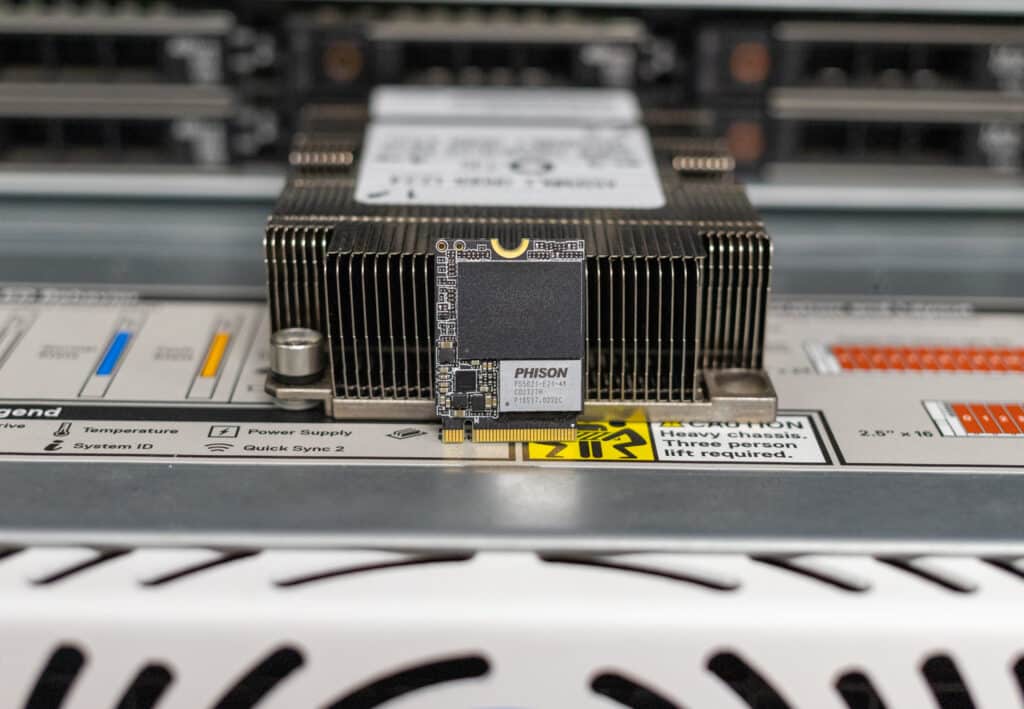
However, when it comes to performance, the FireCuda 520N falls short compared to its competitors. While it shows comparable results to the Corsair MP600 CORE Mini, its performance significantly lags behind the Sabrent 2230 Rocket, particularly in crucial areas such as 4K random reads and writes, and sequential read and write speeds.
This disparity is evident in various benchmark tests, where the FireCuda 520N exhibited poor performance, with its 4K write speeds and sequential read and write speeds being notably subpar. These results are disappointing, especially considering the drive’s intended use in high-demand applications like gaming, where such performance metrics are crucial.
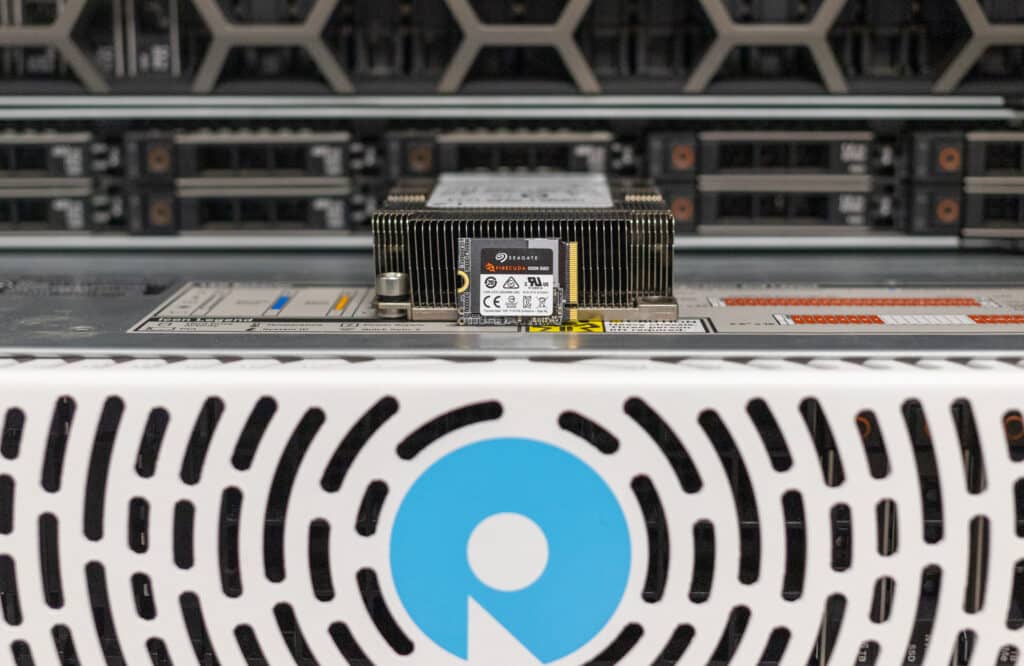
In terms of pricing, the FireCuda 520N doesn’t quite measure up to the competition, particularly when placed alongside the Sabrent 2230 Rocket drive. The Sabrent drive is reasonably priced at $90 for the 1TB model, whereas the FireCuda 520N is notably higher at $110. This price gap is significant, especially considering the performance difference between the two drives. In the realm of high-speed and dependable storage solutions, particularly for handheld gaming and high-performance tasks, the Sabrent 2230 Rocket emerges as a more compelling option. It not only offers enhanced performance but does so at a price that is more aligned with consumer expectations, making this a better choice over the FireCuda 520N.
Ultimately, a reduction in cost might make it a more viable option, but even then, it’s worth noting that there are still reservations about The 520N’s overall value. It will likely remain a tentative choice in a competitive market.




 Amazon
Amazon